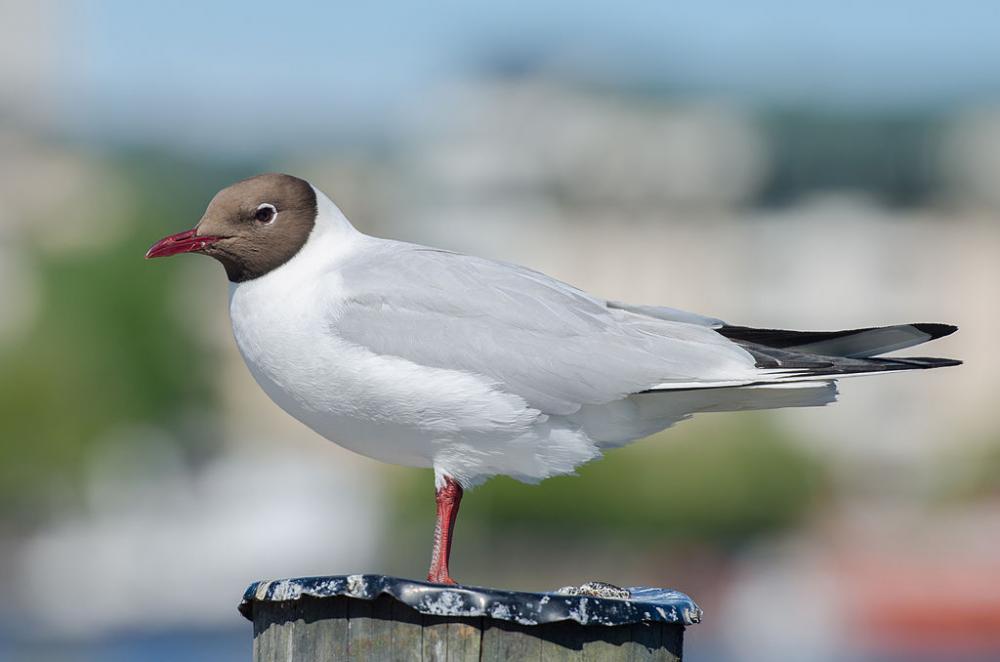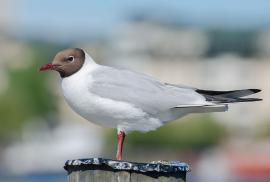Guide to Boreal Birds
Overview
Like that of the Bonaparte's Gull, with which it is almost always found in America, the flight of the Common Black-headed Gull is light and buoyant. In the air it resembles a tern more than a gull. Although this Old World gull is uncommon in North America, it may be seen regularly in small numbers in northeastern coastal waters. In Europe it is one of the most familiar gulls.
Description
15" (38 cm). A small gull with gray back and inner wings and flashing white primaries. In breeding plumage, has dark brown hood; in winter, head becomes white. Red bill and legs. Immature is darker above, but shows some white in primaries and has narrow black tip to tail. In all plumages, undersurface of primaries is blackish. Smaller Bonaparte's Gull has black bill; primaries lack dark undersurface.
Voice
A harsh kwup; various squealing notes.
Nesting
3 buff-brown eggs, with black blotches, in a nest lined with grass, sticks, and seaweed placed in trees, bushes, on rocks, or on the ground. Nesting colonies located on sand dunes, beaches, marshes, and in open fields.
Habitat
Bays and estuaries.
Range/Migration
Breeds in northern portions of Europe and Asia south to their southern parts; winters from the southern portions of the breeding range south to Africa and southern Asia. Uncommon but regular winter visitor to North American Pacific Coast, also East and Great Lakes (rare).



